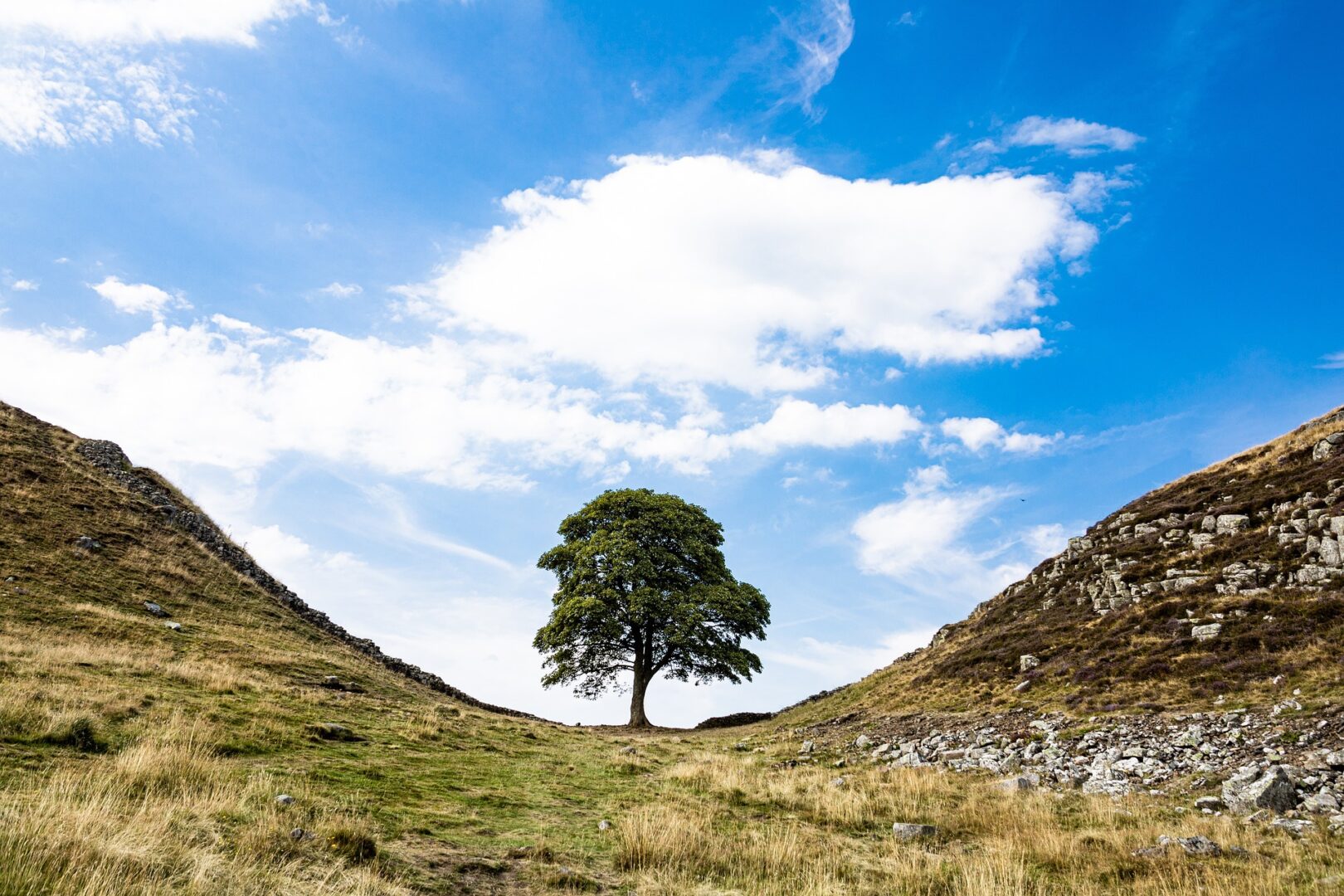Sycamore Gap is a Historical Gem Along Hadrian’s Wall. Hidden amidst the rugged beauty of Northumberland National Park in England lies a place of historical significance and natural splendor –
Sycamore Gap. Nestled along the iconic Hadrian’s Wall, this picturesque location has captivated the hearts of travelers, history enthusiasts, and nature lovers for centuries. In this blog article, we will delve into the intriguing history of Sycamore Gap, exploring its connection to Hadrian’s Wall and the compelling stories that surround it.
Hadrian’s Wall is a Roman fortification that spans across Northern England, built during the reign of the Roman Emperor Hadrian in the early 2nd century AD. Stretching for 73 miles (117 kilometers) from the east to the west coast of England, it marked the northern boundary of the Roman Empire in Britain.
Construction of Hadrian’s Wall began in AD 122 and took approximately six years to complete. Its primary purpose was to serve as a defensive fortification, controlling movement across the northern frontier and acting as a symbol of Roman power and dominance.
Sycamore Gap is a small, but incredibly significant, section of Hadrian’s Wall. It is situated near the midpoint of the wall, close to the border between Northumberland and Cumbria. What sets Sycamore Gap apart and makes it instantly recognizable is the solitary sycamore tree that stands in a dramatic dip between two craggy hills. This natural spectacle has earned it the nickname “The Robin Hood Tree” due to its appearance in the 1991 film “Robin Hood: Prince of Thieves,” starring Kevin Costner.
The Sycamore Tree
The lone sycamore tree at Sycamore Gap is estimated to be around 300 years old and has become a symbol of resilience, standing tall despite the harsh Northumberland winds. Its picturesque silhouette against the backdrop of the ancient wall has made it one of the most photographed trees in England.
Historical Significance
The location of Sycamore Gap, while visually stunning, is also historically significant. It was a vital part of the Roman frontier defense system. A section of the wall here was constructed using a unique method known as ‘curtain walling,’ which involved building the wall between two parallel ditches to create a formidable barrier.
Sycamore Gap likely served as a military checkpoint and could have been home to Roman soldiers who patrolled the wall. Archaeological excavations in the area have revealed artifacts such as coins, pottery, and weaponry, shedding light on the lives of those who once inhabited this remote outpost.
Legends and Folklore
Sycamore Gap is not just a site of historical importance; it’s also shrouded in folklore and legends. One such tale involves a phantom drummer who is said to haunt the area, drumming a ghostly beat along the wall. Another legend links the sycamore tree to the mythical figure of Robin Hood, although there is no historical evidence to support this connection.
Conclusion
Sycamore Gap is a place where history, nature, and legend converge. Its position along Hadrian’s Wall, coupled with the enduring beauty of the sycamore tree, has made it a beloved and iconic destination. Whether you’re a history enthusiast, a hiker exploring the Northumberland landscape, or simply seeking a picturesque spot for reflection, Sycamore Gap has something to offer everyone. As you visit this remarkable location, take a moment to appreciate the rich history and natural wonders that make Sycamore Gap an enduring treasure along the ancient Roman frontier.
It is truly devastating that this wonderful tree has been felled recently, not by the authorities but by two individuals who had a grudge with the authorities who maintained the grounds and the tree.

